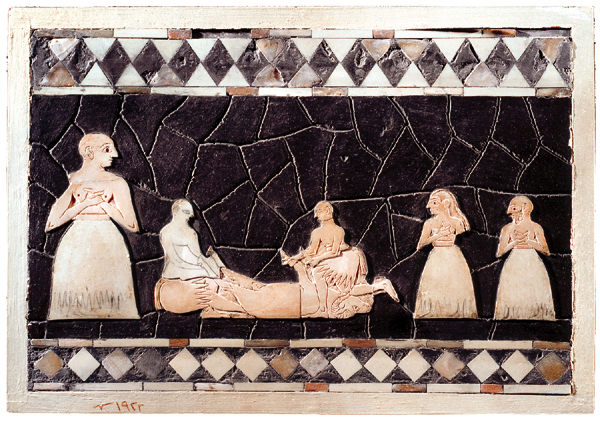Mighty Mari
A Bronze Age Power
Sidebar to: The History Behind the Bible

In 1933, after some local peasants dug up an ancient statue, the French archaeologist André Parrot began excavating at Mari, or Tell Hariri, an obscure site on the Euphrates River near Syria’s present-day border with Iraq. Within several years Parrot had unearthed the well-preserved remains of a grand palace dating to the early second millennium B.C., including largely intact archives containing nearly 25,000 cuneiform tablets. He also found a temple dedicated to the goddess Ishtar and several other sanctuaries.
Since Parrot made his impressive discoveries, scholars have learned much more about Mari, which was a major power in the Near East during the Middle Bronze Age (c. 2200–1550 B.C.). Once home to a West Semitic population that spoke a dialect related to Hebrew, Mari offers new insights into the world of early Israel.
Settlement at the site of Mari dates as far back as the early third millennium B.C. In its earliest phase, Mari was a town built on a circular plan with a canal linking it to the Euphrates. It had a small market, at least three temples and a royal palace. Around 2200 B.C. many buildings in Mari were destroyed, probably by invading Akkadians. The Akkadians then built a new, 300-room (or larger!) palace and adjacent structures that together covered an area of 6 acres; this is the palace complex excavated by Parrot. Its remains, in particular its thousands of royal documents, reveal a great deal about Mari in the time of the Amorite Lim dynasty.
Already a library member? Log in here.
Institution user? Log in with your IP address.

